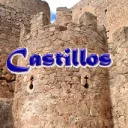• SANTIAGO DE COMPOSTELA (I) Plaza del Obradoiro, Palacio Rajoi, Hostal los Reyes Católicos y Catedral.
 Para disfrutar de tres días en la ciudad de Santiago de Compostela, en este primer día
Para disfrutar de tres días en la ciudad de Santiago de Compostela, en este primer día
Recorremos los emplazamientos más importantes:
- El Palacio de Rajoi.- Fue construido en el S. XVIII su colosal fachada a la plaza del Obraroiro, esta culminada en la parte central con un frontis triangular donde está representada la batalla de Clavijo, y sobre la misma, la figura ecuestre del apóstol Santiago. Hoy es la sede del Ayuntamiento y de la Presidencia de Gobierno de la Junta de Galicia.
- Hostal de los Reyes Católicos.- Se construyó por encargo de los Reyes Católicos tras su peregrinación en 1486, y tras finalizar la conquista de Granada en 1499 encarga a los hermanos Antón y Enrique Egas, su diseño. Y se puso en funcionamiento aun estando en construcción en 1509.
- Colegio de San Jerónimo.- Edificio renacentista del S. XVI, realizado por los maestros de la escuela castellana con sillería de granito y ordenado mediante un patio central. Primera sede de la Universidad.
Entre los espacios del mismo dispone de claustro, capilla y Salón de Grados con un artesonado mudéjar. La portada pertenecía al antiguo Hospital de Peregrinos.
- Catedral de Santiago.- Templo de origen románico con importantes muestras a lo largo del mismo, y que evoluciono a lo largo del tiempo en diferentes estilos, especialmente el barroco. El 3 de abril del año 1211 se consagra la gran catedral románica.
- Pórtico de la Gloria.- Obra del Maestro Mateo en 1188, uno de los elementos románicos de carácter excepcional. En el parteluz se encuentra la imagen del apóstol, en su tímpano un pantocrátor rodeado de ángeles y en la arquivolta exterior los veinticuatro ancianos del Apocalipsis.
- Y la Cripta Catedral.- Su acceso se efectúa entre la doble escalera de la fachada del Obradoiro, coronando la misma, está por encima del nivel de la plaza del Obradoiro, también se llama “Catedral Vieja”. Construida hacia el año 1168 por el Maestro Mateo con una decoración (opuesta a la celestial del Pórtico) más terrenal y los motivos de sus capiteles son vegetales.
Puedes descargarte el PDF.
Pulsar sobre la imagen con el botón derecho y guardar como…para descargar y llevar el archivo PDF en tu tablet o Smartphone toda la información con planos, puntos interesantes a visitar, fotos, contactos, etc. Y si deseas conocer las nuevas publicaciones solo tienes incluirte en seguir para recibirlas por correo electrónico.
-
SANTIAGO DE COMPOSTELA (I) Plaza del Obradoiro, Rajoi Palace, Hostal los Reyes Católicos and Cathedral.
To enjoy three days in the city of Santiago de Compostela, on this first day
We visit the most important locations:
- The Rajoi Palace.- Its colossal façade facing the Plaza del Obraroiro was built in the 18th century, culminating in the central part with a triangular front where the battle of Clavijo is represented, and on it, the equestrian figure of the Apostle James. Today it is the headquarters of the City Council and the Presidency of the Government of the Government of Galicia.
- Hostel of the Catholic Monarchs.- It was built by order of the Catholic Monarchs after their pilgrimage in 1486, and after completing the conquest of Granada in 1499, they commissioned the brothers Antón and Enrique Egas to design it. And it was put into operation even while under construction in 1509.
- San Jerónimo College.- Renaissance building from the 16th century, made by the teachers of the Castilian school with granite ashlars and organized by a central patio. First headquarters of the University.
Among its spaces it has a cloister, chapel and Hall of Degrees with a Mudejar coffered ceiling. The façade belonged to the old Pilgrims Hospital.
- Cathedral of Santiago.– Temple of Romanesque origin with important examples throughout it, and that evolved over time in different styles, especially baroque. On April 3, 1211, the great Romanesque cathedral was consecrated.
- Portico of Glory.- Work of Master Mateo in 1188, one of the exceptional Romanesque elements. In the mullion there is the image of the apostle, in its tympanum a pantocrator surrounded by angels and in the exterior archivolt the twenty-four elders of the Apocalypse.
- And the Cathedral Crypt.- Its access is between the double staircase of the Obradoiro façade, crowning it, it is above the level of the Obradoiro square, it is also called “Old Cathedral”. Built around the year 1168 by Master Mateo with a more earthly decoration (opposite to the heavenly decoration of the Portico) and the motifs of its capitals are vegetal.
You can download the PDF.
Click on the image with the right button and save as… to download and take the PDF file on your tablet or Smartphone all the information with plans, interesting points to visit, photos, contacts, etc. And if you want to know the new publications, you just have to include yourself in follow to receive them by email.
-
SANTIAGO DE COMPOSTELA (I) Plaza del Obradoiro, Palais Rajoi, Hostal los Reyes Católicos et Cathédrale.
Pour profiter de trois jours dans la ville de Saint-Jacques-de-Compostelle, ce premier jour
Nous visitons les lieux les plus importants :
- Le Palais Rajoi.- Sa façade colossale face à la Place de l’Obraroiro a été construite au XVIIIe siècle, culminant dans la partie centrale avec une façade triangulaire où est représentée la bataille de Clavijo, et sur celle-ci, la figure équestre de l’Apôtre Jacques. Aujourd’hui, c’est le siège de la Mairie et de la Présidence du Gouvernement de Galice.
- Auberge de jeunesse des rois catholiques.- Il a été construit sur ordre des Rois Catholiques après leur pèlerinage en 1486, et après avoir achevé la conquête de Grenade en 1499, ils ont chargé les frères Antón et Enrique Egas de le concevoir. Et il a été mis en service alors qu’il était en construction en 1509.
- Collège Saint-Jérôme.- Bâtiment Renaissance du XVIe siècle, réalisé par les professeurs de l’école castillane avec des pierres de taille en granit et organisé par un patio central. Premier siège de l’Université.
Parmi ses espaces, il comprend un cloître, une chapelle et une salle des degrés avec un plafond à caissons mudéjar. La façade appartenait à l’ancien hôpital des pèlerins.
- Cathédrale de Santiago.- Temple d’origine romane avec des exemples importants partout, et qui a évolué au fil du temps dans différents styles, notamment baroque. Le 3 avril 1211, la grande cathédrale romane est consacrée.
- Portique de la Gloire.- Oeuvre du Maître Mateo en 1188, un des éléments romans exceptionnels. Dans le meneau se trouve l’image de l’apôtre, dans son tympan un pantocrator entouré d’anges et dans l’archivolte extérieure les vingt-quatre anciens de l’Apocalypse.
- Et la Crypte de la Cathédrale.- Son accès se fait entre le double escalier de la façade de l’Obradoiro, qui la couronne, elle se trouve au-dessus du niveau de la place de l’Obradoiro, elle est aussi appelée « Vieille Cathédrale ». Construit vers l’an 1168 par Maître Mateo avec un décor plus terrestre (à l’opposé du décor céleste du Portique) et les motifs de ses chapiteaux sont végétaux.
Vous pouvez télécharger le PDF.
Cliquez sur l’image avec le bouton droit et enregistrez sous… pour télécharger et emporter au format PDF sur votre tablette ou Smartphone toutes les informations avec les plans, les points intéressants à visiter, les photos, les contacts, etc. Et si vous souhaitez connaître les nouvelles publications, il vous suffit de vous inclure dans le suivi pour les recevoir par email.
-
SANTIAGO DE COMPOSTELA (I) Plaza del Obradoiro, Rajoi-Palast, Hostal los Reyes Católicos und Kathedrale.
An diesem ersten Tag können Sie drei Tage in der Stadt Santiago de Compostela genießen
Wir besuchen die wichtigsten Orte:
- Der Rajoi-Palast. – Seine kolossale Fassade mit Blick auf die Plaza del Obraroiro wurde im 18. Jahrhundert erbaut und endet im zentralen Teil mit einer dreieckigen Front, auf der die Schlacht von Clavijo und die Reiterfigur des Apostels Jakobus dargestellt sind. Heute ist es Sitz des Stadtrats und des Regierungspräsidiums der galizischen Regierung.
- Herberge der Katholischen Könige. – Es wurde im Auftrag der Katholischen Könige nach ihrer Pilgerreise im Jahr 1486 erbaut und nach Abschluss der Eroberung Granadas im Jahr 1499 beauftragten sie die Brüder Antón und Enrique Egas mit der Gestaltung. Und es wurde bereits während der Bauphase im Jahr 1509 in Betrieb genommen.
- St. Jerome’s College. – Renaissancegebäude aus dem 16. Jahrhundert, von den Lehrern der kastilischen Schule aus Granitquadern erbaut und durch einen zentralen Innenhof gegliedert. Erster Hauptsitz der Universität.
Zu seinen Räumen gehören ein Kreuzgang, eine Kapelle und ein Graduiertensaal mit einer Kassettendecke im Mudéjar-Stil. Die Fassade gehörte zum alten Pilgerkrankenhaus.
- Kathedrale von Santiago. – Tempel romanischen Ursprungs mit bedeutenden Beispielen, der sich im Laufe der Zeit in verschiedenen Stilen, insbesondere im Barock, weiterentwickelte. Am 3. April 1211 wurde die große romanische Kathedrale geweiht.
- Portikus der Herrlichkeit. – Werk von Meister Mateo aus dem Jahr 1188, eines der außergewöhnlichsten romanischen Elemente. Im Mittelpfosten befindet sich das Bild des Apostels, in seinem Tympanon ein von Engeln umgebener Pantokrator und in der äußeren Archivolte die vierundzwanzig Ältesten der Apokalypse.
- Und die Krypta der Kathedrale. – Ihr Zugang befindet sich zwischen der Doppeltreppe der Obradoiro-Fassade, die sie krönt. Sie liegt über dem Niveau des Obradoiro-Platzes und wird auch „Alte Kathedrale“ genannt. Erbaut um das Jahr 1168 von Meister Mateo mit einer eher irdischen Dekoration (im Gegensatz zur himmlischen Dekoration des Portikus) und mit Pflanzenmotiven in den Kapitellen.
Sie können das PDF herunterladen.
Klicken Sie mit der rechten Maustaste auf das Bild und speichern Sie es unter…, um die PDF-Datei mit Plänen, interessanten Sehenswürdigkeiten, Fotos, Kontakten usw. herunterzuladen und auf Ihr Tablet oder Smartphone zu übertragen. Und wenn Sie die neuen Veröffentlichungen kennenlernen möchten, müssen Sie sich nur bei „Folgen“ eintragen, um sie per E-Mail zu erhalten.

 castillode.wordpress.com
castillode.wordpress.com museode.wordpress.com
museode.wordpress.com
Deja un comentario